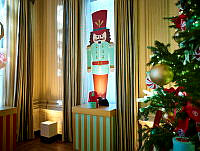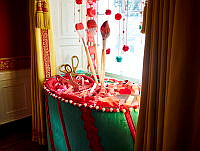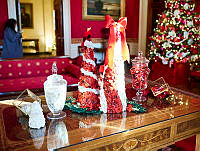
Weddings and the White House
From First Lady Dolley Madison's sister Lucy Payne Washington's wedding in 1812 to the nuptials of President Joseph Biden and First Lady Jill Biden's granddaughter Naomi Biden on the South Lawn in November 2022, the White House has long been the site of wedding ceremonies and receptions. In over two hundred years, there have been nineteen documented weddings and four receptions hosted

































































